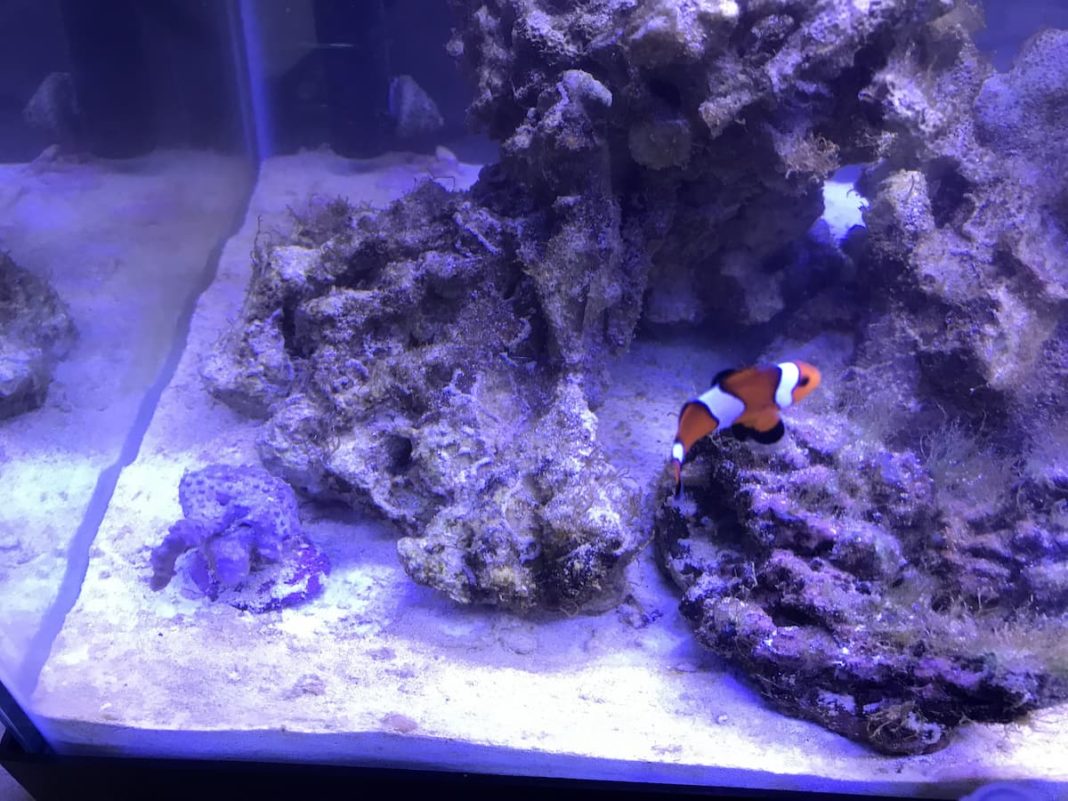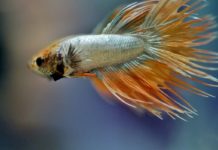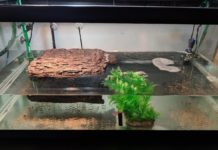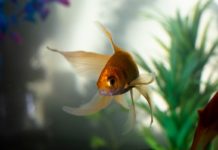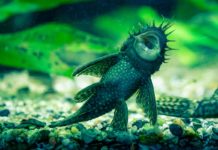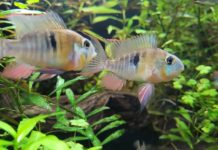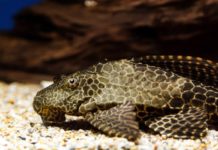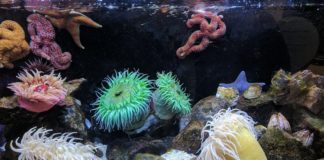If your GSP coral is not opening or extending as it should be, it’s likely due to one of these five reasons.
- Water parameters: Salinity, alkalinity, calcium, and magnesium levels in the aquarium may be out of the acceptable ranges.
- Lighting: Too much light can be toxic for GSP corals, on the other hand, too little light can also slowly deteriorate the coral.
- Water quality: Excessive nitrate, phosphate, ammonia levels, or unintended impurities/pollutants like oils could be harming your tank.
- Pests, Fungus, or Infections: All corals are living organisms and are therefore susceptible to attacks from pests such as flatworms and nudibranchs and fungus and infections. Other tank mates can also attack GSP corals.
- Flow: filtration pumps and power heads can create hot spots where the water’s flow rate is too much for the coral tissue to handle. They can retract, protecting themselves from tissue damage.
Regardless of your experience, many reefers will have periods where their corals aren’t doing well. A GSP coral may also be pale or dull in colour. A period of coral problems happens to everyone in the hobby at some point; even having corals die isn’t as rare as you would think.
GSP Coral Not Opening Up After A Water Change?
One of the main causes for a GSP coral not opening is because of the water quality. Although the good news is that you can test your water parameters to determine what is wrong.
The first parameter to check is salinity. As GSP corals don’t have mechanisms of osmoregulation. This means that changes in salinity directly affect their metabolism and survival capacities. The negative changes that you’re seeing with your GSP coral are them fighting to acclimate to the stress on their system.
The water salinity of your tank should be 35 parts per thousand. Although you can be off by a point or two occasionally without drastic coral changes, the discrepancy needs to be corrected to avoid long-term coral deterioration. A useful and low-cost method of accurately testing for salinity is to use a refractometer.
Salinity levels can easily be adjusted by removing some saltwater from the tank and replacing it with fresh RO/DI water.
GSP Corals Not Opening Up Or Extending
The most likely cause for your GSP coral not opening up or extending is because of poor water parameters. Alkalinity, calcium, and magnesium are important elements to the proper function and growth of a coral. When any of these three elements are outside of the proper range, your GSP coral will start to show negative effects, like retracting.
Alkalinity is thought of as the most important element as it serves two major roles, first is maintaining the tank’s pH. The second provides carbonate and bicarbonate, which is how corals stay healthy and grow. One of the keys to having a successful reef tank and happy corals is managing a stable alkalinity level.
Calcium would be considered to be the second most essential element of a healthy reef aquarium. GSP corals and other marine organisms (like invertebrates) require calcium for calcification and growth.
Magnesium is the third most essential element for a GSP coral to be healthy. In addition to biological functions, it prevents the excessive precipitation of calcium carbonate from staying in the water. As previously mentioned, calcium and alkalinity are also essential to reef corals and organisms, and ensuring that they’re not lost to excessive precipitation is essential.
If your tank is low on alkalinity, calcium, or magnesium, you’ll see stunted coral growth and a loss of color, which can cause a GSP coral to retract. Having too much alkalinity, calcium or magnesium will also cause precipitation, coral damage, and can even damage your aquarium equipment.
Water Parameters That Can Affect Your Corals From Opening-Up
It’s very easy to fall into habits that allow the slow deterioration of water quality from poor feeding or maintenance practices. Unintended impurities/pollutants like lotions, oil, or soaps from your hands can also quickly deteriorate your tank’s water quality. Products like aerosols used near the tank can also add pollutants.
If you believe your reef tank may have harmful impurities or pollutants in it, it’s a great time to break out the carbon! You can do this by changing out your carbon or adding carbon into your media reactor, throwing a bag in the media tower, or whatever method you use for carbon. By putting some fresh carbon into the filter system will result in pulling all those pollutants out of the tank’s water.
If by this time you still don’t see a marked improvement in your GSP coral, it’s time to begin doing water changes. Usually, 3 to 4 30% water changes over a few days will be able to do the trick. However, if you suspect a particularly harmful accidental contaminant and things are rapidly deteriorating, then you may have to go all in with a 50% or even 90% water change. Just make sure that the newer water is properly mixed and heated to reduce the stress on your GSP coral and other livestock.
Lighting Can Prevent GSP Corals From Opening-Up
Too much light (photosynthetic active radiation) is toxic to all corals. One of the quickest ways to kill a new coral is to place it in a hot spot with too much light. Too much lighting could cause a coral to shrink and retract its polyps.
While not having enough light may take a few weeks to show signs of coral distress. A common sign that a coral isn’t getting enough light is for them to stretch out, reaching for the light or turning brown.
If your GSP coral has been put in the tank recently, it may be struggling in its new location. You can move it to a lower light area in the tank, like the sides or bottom. It could take up to a couple of weeks to recover before you should move it again if nothing has changed.
Pests, Fungus, Or Infections
All corals are living organisms and are susceptible to attacks from pests such as flatworms and nudibranchs and fungus and infections and even other tank livestock.
Many of these issues usually only affect a single coral or type of coral. If you believe any of these culprits to be damaging the GSP coral tank, it’s time to remove the coral and dip it carefully.
You can buy various dips that kill off pests, such as flatworms, nudibranchs, and zoanthid-eating spiders. Dips can also be used to help heal coral of rapid tissue necrosis, slow tissue necrosis, bacterial infections, and more. If you diagnose the problem, a dip will likely return the coral to its previously happy self. The before and after polyp and tentacle extension is often dramatic as a pest or disease-ridden coral has been dipped as it’s returned to the tank.
Conclusion
Corals that have soft tissue, such as large polyps or tentacles such as the GSP coral, are often more sensitive to flow from power heads and filtration pumps than corals with smaller polyps. Every type of coral acclimates best in a particular type of water flow. Soft corals like the GSP coral typically prefer moderate to low flow areas of the tank. A rhythmic pulsating water flow pattern usually works best for soft corals.
Water flow should normally be pretty stable in a reef aquarium unless you are constantly interfering with your power head placement or adjustments. If your GSP coral has been doing fine where it’s at, and all of a sudden, it’s not opening or extending, then it is likely a parameter issue and not water flow.
If you’ve recently added the GSP coral and it’s not opening or extending after a couple of days, you should try it in an area within the aquarium with less flow to see if the flow rate or pattern is the problem.

